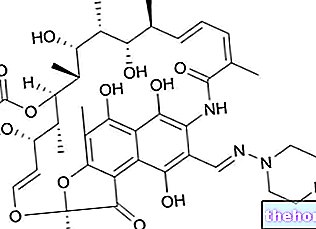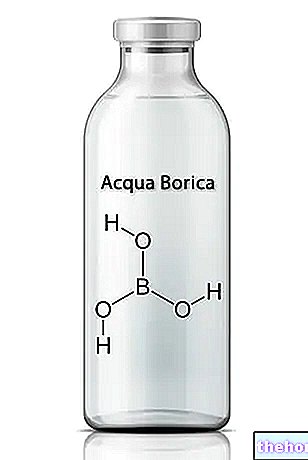
In other words, antipyretics are those drugs that are used to lower the body temperature when it rises above a given level, without interfering with the body temperature values considered physiological.
Brief Review: Fever and Classification of Values
We remind you that fever is a condition characterized by an increase in body temperature that occurs regardless of any changes in external climatic conditions. Fever, in fact, can be interpreted as an adaptive system or a defense mechanism triggered by the organism to counteract any bacterial or viral infections, but also in response to important psychophysical stress, food poisoning and even serious trauma.
Going into more detail, we can talk about fever when the body temperature rises above what are considered normal values, included in the range that goes from 36.4 ° C to 37.5 ° C. Depending on the value presented, fever can be classified as follows:
- Subfebrile state: 37-37.4 ° C
- Low temperature: 37.5 - 37.9 ° C
- Moderate or medium-high fever: 38 - 38.9 ° C
- Very high or elevated fever: 39-39.9 ° C
- Hyperpyrexia: above 40 ° C
Paracetamol is considered a safe drug, so much so that its use is possible - at the appropriate dosages - even in children and even infants. It is therefore not surprising that it represents the drug of first choice in the treatment of fever in children, barring any allergies.
It is a well-tolerated active ingredient available in many medicines formulated in pharmaceutical forms suitable for the most diverse routes of administration: from oral, through rectal and even parenteral.
How Does Paracetamol Work?
The "exact mechanism of action" by which paracetamol carries out its analgesic and antipyretic actions is not entirely clear. The most accredited hypotheses are those according to which paracetamol exerts its activities through the inhibition of the type 3 isoform of the cyclooxygenase enzyme (COX-3) present in the central nervous system and the decrease in the levels of PGE2 (prostaglandins E2 ), again at a central level. It is also hypothesized that the fever-lowering action of paracetamol may be attributable to its ability to inhibit the action of endogenous pyrogens (the substances that induce the "raising of body temperature) on the hypothalamic regulatory centers. .
How is it used and in what doses?
Dosage, method and time of administration of paracetamol may vary according to the medicine taken into consideration, the amount of active ingredient contained in it and the age of the patient. For this reason, it is necessary to follow the instructions provided by the doctor and read carefully the package leaflet of the paracetamol-based medicine to be taken.
Please note
Although paracetamol is considered a safe drug when properly used, people who suffer from liver disease or disease and / or who are taking drugs that can impair liver function should always consult their doctor before taking the active ingredient and, also in that case, its use must be done with caution.
Side Effects and Contraindications
Although normally well tolerated, paracetamol is certainly not without side effects or contraindications. In this regard, it is always important to read the package leaflet.
In any case, more information on paracetamol can be found in the dedicated article:
ParacetamolNon Steroidal Anti-inflammatories such as Antipyretics
Even some non-steroidal anti-inflammatory drugs (NSAIDs) are able to exert - in addition to the classic anti-inflammatory and analgesic activities - a significant antipyretic action that can be exploited under certain conditions to counteract the excessive rise in body temperature. Examples of NSAIDs that can be used in this sense are:
- Ibuprofen: is the second most widely used drug to combat fever and pain associated with colds in children, but it is also used for these indications in adult patients.
- Acetylsalicylic acid: certainly better known as "Aspirin", acetylsalicylic acid is another NSAID which, in addition to its anti-inflammatory and analgesic properties, also boasts an "antipyretic activity. Not surprisingly, it is also used - at suitable dosages - to treat febrile states, flu and cold syndromes.
- Metamizole: this is another NSAID that can be used to lower fever, whose use, however, is limited to particular cases due to the important side effects it can cause. Metamizole, in fact, is indicated for the treatment of feverish states and / or painful but severe and resistant states.
NSAIDs perform their action mainly through the inhibition of the type 2 isoform of the cyclooxygenase enzyme (COX-2).
Among the main side effects, we find: gastrointestinal disorders (including ulceration and perforation), diarrhea or constipation. In general, non-selective NSAIDs are all endowed with a certain, more or less high gastro-injurious power; therefore, they should be used only if really necessary (like any other drug) and if prescribed by the doctor.
In any case, since NSAIDs are a large family, it is advisable to carefully read the package leaflet of the medicine that must be taken both to know the undesirable effects of the specific active ingredient that must be taken, and to know contraindications, warnings and precautions, drug interactions. Furthermore, in case of doubts, a doctor's consultation is always advisable.




























